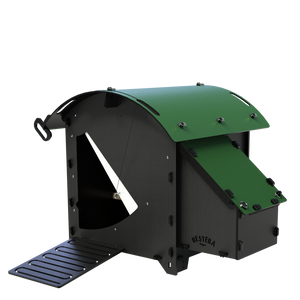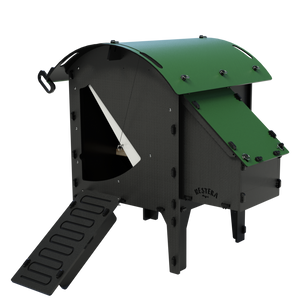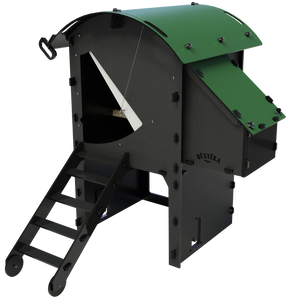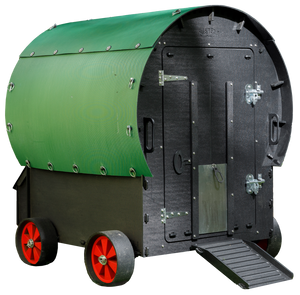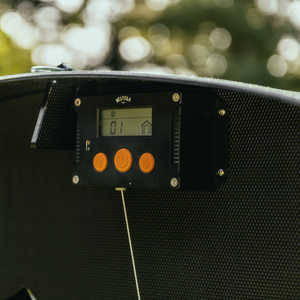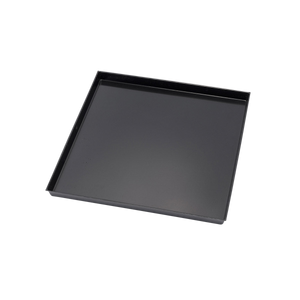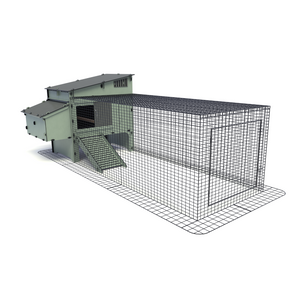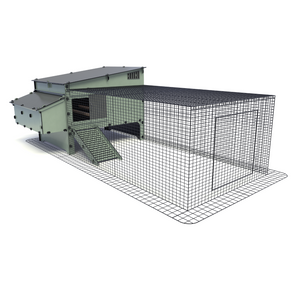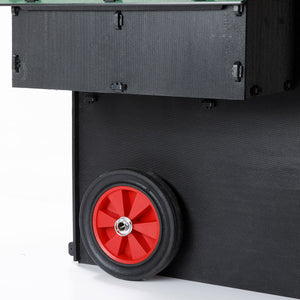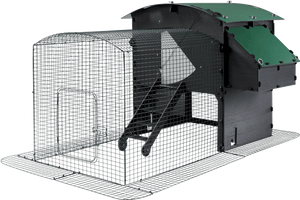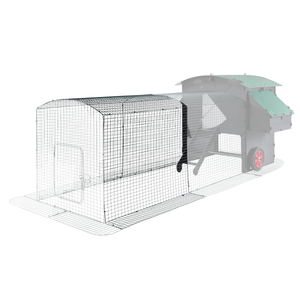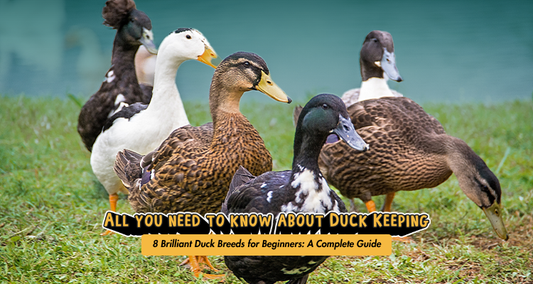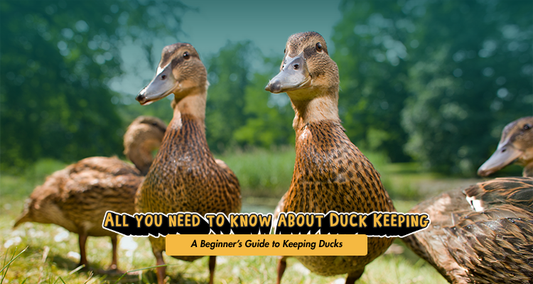Chickens are covered in thousands of feathers, and it’s completely normal for a few to go missing now and then. But how do you know when feather loss is harmless… and when it’s a sign of something more serious?
In this guide, we explore why chickens lose feathers, what’s normal vs. abnormal, and how to support your flock during moulting and beyond.
The Two Types of Feather Loss: Physiological vs. Pathological
-
Physiological feather loss is natural (like moulting or broodiness).
-
Pathological feather loss is preventable and caused by stress, parasites, or injury.

Knowing the difference is key to keeping your chickens healthy and stress-free.
1. Feather Loss from Mating
If you have a rooster, feather loss on a hen's back or neck is often due to mating. During the act, the rooster grips the hen’s back feathers and neck with his beak and spurs, which can lead to patchy bald spots.

Solution:
Use a hen saddle to protect her feathers. These fabric covers loop under the wings and shield vulnerable areas.
2. Dominance Pecking in the Flock
Feathers missing from the head, neck, or vent? Your hen may be low in the pecking order. Chickens assert dominance through pecking—especially when introducing new birds to the flock.

Solution:
-
Use anti-pecking spray to deter feather pecking.
-
Isolate the bully in a crate for a week to reset the flock hierarchy.
3. Stress or Boredom Pecking
Chickens need to forage, scratch, and explore. If they can’t, they may peck each other out of frustration—sometimes even causing injury.
Solution:
-
Provide plenty of outdoor space.
-
Add enrichment: perches, dust baths, scratching material, and novel objects.
-
Ensure predator security to reduce anxiety.
4. Broodiness and Feather Plucking
Broody hens often pluck their own chest and belly feathers to create brood patches—bare skin areas that help warm their eggs.

Good news: This is completely natural. Feathers will regrow after the broody phase ends, usually in the autumn.
5. Parasites (Lice & Mites)
Common feather-feeding parasites:
-
Poultry lice: Leave clumps of eggs at the feather base.

-
Depluming mites: Burrow into the feather shaft and cause intense itching.
Solution:
-
Part feathers to look for eggs or crawling insects.
-
Consult a vet or poultry supplier for suitable lice/mite treatments.
-
Never use treatments for other animals on poultry without veterinary advice.
Chickens are food-producing animals — using unapproved products can contaminate eggs or meat.
6. Feather Loss from Predators or Injury
If your chicken suddenly has a large patch of feathers missing, especially on her side, it may be due to a predator attack. Chickens are “loose-feathered,” meaning they can escape with just a mouthful of feathers lost.
Solution:
Reinforce your run and coop to keep predators like dogs and foxes out.
7. Poor Nutrition or Lack of Water
Stress lines or weak feathers that break easily can indicate malnutrition or dehydration. Inadequate protein or key nutrients lead to poor feather quality.

Solution:
-
Feed a balanced layer feed with sufficient protein.
-
Offer amino acid supplements during moulting.
-
Ensure constant access to clean water.
Final Tips for Feather Health
-
Keep your coop clean to prevent parasites.
-
Monitor flock behaviour to catch issues early.
-
Give moulting hens extra protein to support feather regrowth.
-
Limit stress by maintaining a calm, enriched environment.

